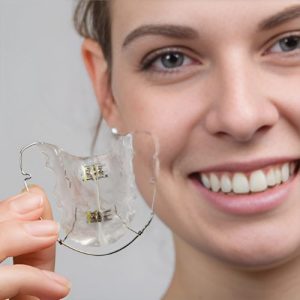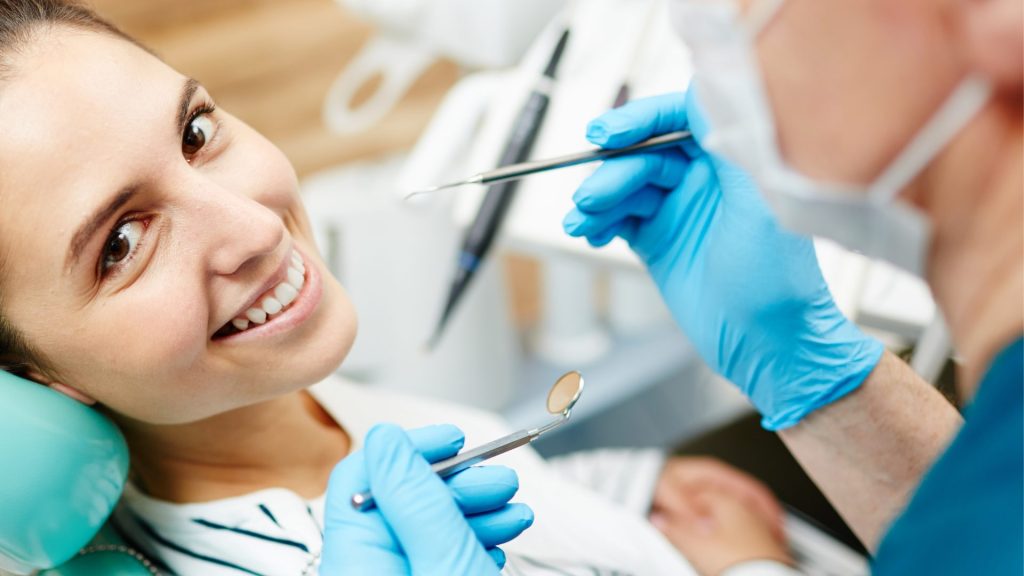At VKOrthodontist, Dr. Vinay Kumar specializes in early orthodontic intervention, recognizing the critical role of jaw growth in achieving a harmonious smile and bite. Functional appliances are a key part of this approach, designed to harness natural growth patterns to correct jaw discrepancies and create a stable foundation for teeth. These innovative appliances can significantly improve facial balance and reduce the need for more complex treatments later in life.


At VKorthodontist, Dr. Vinay Kumar specializes in early orthodontic intervention, recognizing the critical role of jaw growth in achieving a harmonious smile and bite. Functional appliances are a key part of this approach, designed to harness natural growth patterns to correct jaw discrepancies and create a stable foundation for teeth. These innovative appliances can significantly improve facial balance and reduce the need for more complex treatments later in life.

Functional appliances are a category of orthodontic devices primarily used to correct discrepancies in jaw growth, particularly in growing children and adolescents. Unlike braces that primarily move teeth, functional appliances work by positioning the jaws in a way that encourages more balanced growth. They often come in two main types:
Removable Appliances: These can be taken out for eating and cleaning, and often resemble retainers with specialized components.
Fixed Appliances: These are cemented into the mouth and remain in place throughout the treatment period.
The goal is to guide the upper and lower jaws into a more ideal relationship, addressing issues like severe overbites or underbites early on.

Functional appliances are a category of orthodontic devices primarily used to correct discrepancies in jaw growth, particularly in growing children and adolescents. Unlike braces that primarily move teeth, functional appliances work by positioning the jaws in a way that encourages more balanced growth. They often come in two main types:
Removable Appliances: These can be taken out for eating and cleaning, and often resemble retainers with specialized components.
Fixed Appliances: These are cemented into the mouth and remain in place throughout the treatment period.
The goal is to guide the upper and lower jaws into a more ideal relationship, addressing issues like severe overbites or underbites early on.
Dr. Kumar may recommend a functional appliance when there’s an imbalance in the growth of the upper and lower jaws. Common conditions treated include:
Significant Overbite (Class II Malocclusion): Where the upper jaw or teeth protrude too far forward. Functional appliances can encourage forward growth of the lower jaw.
Underbite (Class III Malocclusion): Where the lower jaw or teeth protrude beyond the upper jaw. Certain functional appliances can restrict lower jaw growth or encourage upper jaw growth.
Jaw Asymmetry: Helping to guide more symmetrical development.
Improving Facial Profile: By correcting jaw discrepancies, functional appliances can lead to a more balanced and aesthetically pleasing facial profile.
Early intervention with functional appliances, typically during a child’s growth spurt, can often prevent the need for surgical correction in adulthood.

Dr. Kumar may recommend a functional appliance when there’s an imbalance in the growth of the upper and lower jaws. Common conditions treated include:
Significant Overbite (Class II Malocclusion): Where the upper jaw or teeth protrude too far forward. Functional appliances can encourage forward growth of the lower jaw.
Underbite (Class III Malocclusion): Where the lower jaw or teeth protrude beyond the upper jaw. Certain functional appliances can restrict lower jaw growth or encourage upper jaw growth.
Jaw Asymmetry: Helping to guide more symmetrical development.
Improving Facial Profile: By correcting jaw discrepancies, functional appliances can lead to a more balanced and aesthetically pleasing facial profile.
Early intervention with functional appliances, typically during a child’s growth spurt, can often prevent the need for surgical correction in adulthood.

Functional appliances work by gently repositioning the lower jaw forward or backward, or by applying forces that stimulate or restrict growth in specific directions. They achieve this by:
Muscle Retraining: Guiding the jaw into a new position encourages the muscles to adapt, influencing bone growth.
Guiding Growth: Applying constant, gentle pressure to specific areas of the jawbone to stimulate or redirect growth.
Creating Space: In some cases, they can also help create space for erupting teeth.
The consistent wearing of these appliances, as prescribed by Dr. Vinay Kumar, is crucial for their success.
Advantages of Functional Appliance Treatment at VKOrthodontist
Optimized Jaw Growth: Harnesses natural growth to correct underlying skeletal issues.
Improved Facial Harmony: Leads to a more balanced and attractive facial profile.
Reduced Need for Surgery: Early treatment can often avoid the need for jaw surgery later in life.
Enhanced Bite Function: Creates a more stable and efficient bite.
Better Long-Term Stability: Addressing the skeletal foundation can lead to more stable orthodontic results.
Comprehensive Approach: Often used as the first phase of orthodontic treatment, setting the stage for braces or aligners.

| Aspect | With Functional Appliances | Without Functional Appliances (Unaddressed Issues) |
|---|---|---|
| Jaw Growth | Optimized and guided to correct underlying skeletal issues. | Jaw discrepancies may worsen, leading to more severe skeletal imbalances. |
| Facial Harmony | Leads to a more balanced and attractive facial profile. | Facial asymmetry or disproportion may persist or become more pronounced. |
| Need for Surgery | Early treatment can often avoid the need for jaw surgery later in life. | Increased likelihood of requiring complex jaw surgery in adulthood. |
| Bite Function | Creates a more stable and efficient bite. | Inefficient bite, potential for uneven tooth wear and jaw joint issues. |
| Long-Term Stability | Addressing the skeletal foundation leads to more stable orthodontic results. | Orthodontic results may be less stable and prone to relapse without skeletal correction. |
| Treatment Approach | Comprehensive approach, often a first phase setting the stage for other treatments. | Later treatment may be more complex, requiring more extensive procedures to compensate. |
Smiles Transformed, Confidence Restored – Real Stories from Happy Patients!
Functional appliances are orthodontic devices designed to guide and optimize jaw growth, primarily in growing children. Unlike braces, which mainly move teeth, functional appliances work by positioning the jaws to correct discrepancies like overbites or underbites, aiming for a more balanced skeletal relationship.
Dr. Kumar typically recommends functional appliances when there’s an imbalance in jaw growth, such as a significant overbite (upper jaw too far forward) or underbite (lower jaw too far forward). Early intervention during a child’s growth spurt can effectively correct these skeletal issues.
The primary benefits include optimized jaw growth, leading to improved facial harmony, a more balanced bite, and often reducing or eliminating the need for complex jaw surgery in adulthood. They also contribute to more stable long-term orthodontic results.
Yes, one of the significant advantages of early treatment with functional appliances is that it can often prevent the need for more invasive jaw surgery (orthognathic surgery) when the child reaches adulthood, by correcting the skeletal discrepancies during their growth phase.
Functional appliances are often used as the first phase of orthodontic treatment. They address the underlying skeletal issues by guiding jaw growth. After this phase, traditional braces or clear aligners (like Invisalign) may be used as a second phase to fine-tune the alignment of the teeth.
Smiles Transformed, Confidence Restored – Real Stories from Happy Patients!
Functional appliances are orthodontic devices designed to guide and optimize jaw growth, primarily in growing children. Unlike braces, which mainly move teeth, functional appliances work by positioning the jaws to correct discrepancies like overbites or underbites, aiming for a more balanced skeletal relationship.
Dr. Kumar typically recommends functional appliances when there’s an imbalance in jaw growth, such as a significant overbite (upper jaw too far forward) or underbite (lower jaw too far forward). Early intervention during a child’s growth spurt can effectively correct these skeletal issues.
The primary benefits include optimized jaw growth, leading to improved facial harmony, a more balanced bite, and often reducing or eliminating the need for complex jaw surgery in adulthood. They also contribute to more stable long-term orthodontic results.
Yes, one of the significant advantages of early treatment with functional appliances is that it can often prevent the need for more invasive jaw surgery (orthognathic surgery) when the child reaches adulthood, by correcting the skeletal discrepancies during their growth phase.
Functional appliances are often used as the first phase of orthodontic treatment. They address the underlying skeletal issues by guiding jaw growth. After this phase, traditional braces or clear aligners (like Invisalign) may be used as a second phase to fine-tune the alignment of the teeth.
If you’re concerned about your child’s jaw development or bite, a consultation with Dr. Vinay Kumar is highly recommended. He will assess their growth and determine if a functional appliance is the most appropriate and beneficial treatment option to guide them towards a healthy, beautiful smile.
Address:
Delma St – Al Danah –
Zone 1 – Abu Dhabi – United Arab Emirates
Phone: +971 58 581 2423
Hours: Monday to Sunday (9 am–9 pm)
Address:
Delma St – Al Danah –
Zone 1 – Abu Dhabi – United Arab Emirates
Phone: +971 58 581 2423
Hours: Monday to Sunday (9 am–9 pm)